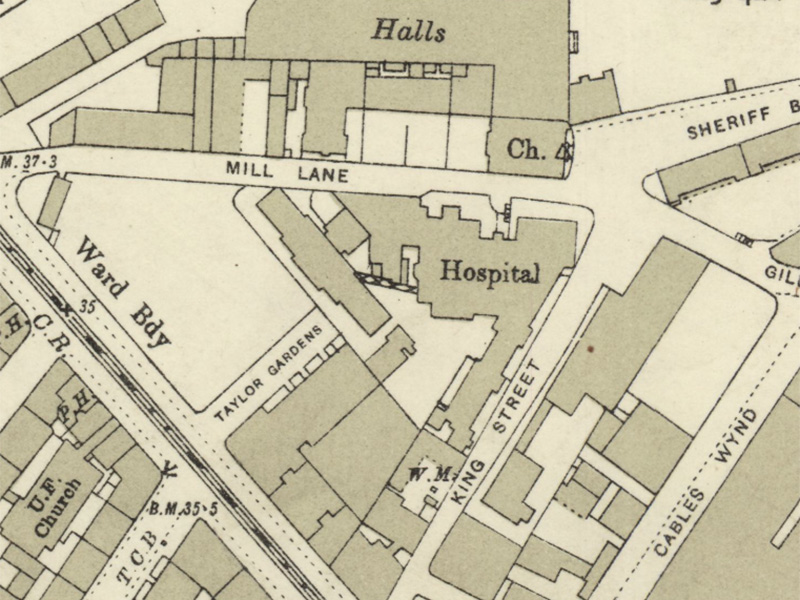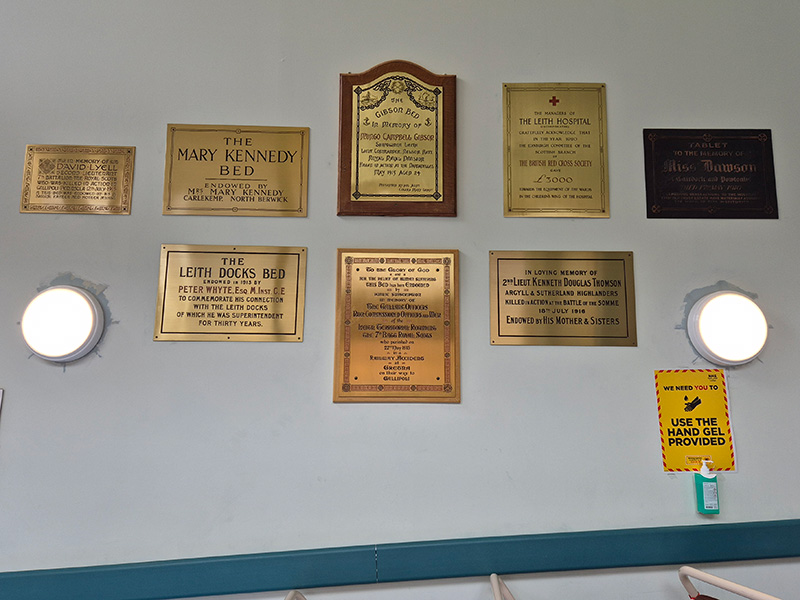Leith Hospital


Early efforts at medical care included those by by the Humane Society in the late eighteeneth century, at first in Burgess Close and Bernard Street and then in Broad Wynd. In 1816 a dispensary was opened, also in Broad Wynd, at number 17, a few doors along from the Humane Society room. The dispensary consisted of a consulting room, a small laboratory and a single bed. In 1825, the Humane Society and the dispensary combined, to form the Leith Dispensary and Humane Society. In 1837, the Leith Dispensary and Humane Society extended their activities by moving to a large house in Quality Street, now Maritime Street, in what effectively became a Casualty Hospital.
By the 1840s, Leith was an independent burgh of some 40,000 people. Pressure increased to establish and fund a new hospital and after a public meeting in 1846 funds were raised and a site found, at the upper end of Sheriff Brae.
The new hospital incorporated the functions of the Casualty Hospital and the Dispensary. In 1875 an extension to the hospital was built in King Street to meet increasing demand for its services.
Two further extensions were added to the hospital in 1873 and 1888. In 1903 to mark Queen Victoria’s jubilee a new major extension, the surgical block, was opened on King Street facing the nurses’ home which had been built on the opposite side of the street. The two buildings were connected by tunnel running under King Street.
Following the establishment by Sophia Jex-Blake (1840–1912) of the Edinburgh School of Medicine for Women, in 1887 the Hospital Directors gave Jex Blake permission to allow her female medical students to attend Leith Hospital for comprehensive clinical teaching..
At the start of the twentieth century, Leith was a modern busy hospital, at last able to meet the health needs of the community which it served. The pressure on beds was further relieved by the opening of the East Pilton Fever Hospital in 1896 (later the Northern General Hospital, and now the site of a Morrison’s supermarket).
In 1908 the South Leith poorhouse moved to Seafield where it later became the Eastern General Hospital. The vacated site which fronted onto Great Junction Street was bought by the hospital in 1911 in the hope that it might be used for future expansion.
The Quintinshill Rail Disaster in May 1915 resulted in 226 fatalities of whom 214 were soldiers of the 7th Battalion (Leith’s Own) Royal Scots, many from Leith, on their way to Gallipoli. This remains Britain’s worst rail disaster.
The Leith community decided that their war memorial should take the form of the children’s wing for Leith Hospital. Fundraising started in 1919. Many individual benefactors supported the hospital by endowing beds, in memory of relatives killed in action in the First World War. The new building, which was designed by George Simpson, opened in January 1927. The new children’s wing had a royal visit from the Duke and Duchess of Kent in May 1935. The hospital joined the National Health Service in 1948.
Leith Hospital closed in 1987, with the buildings converted to residential units. Local protests, including a petition to keep the hospital open, were unsuccessful. The building was sold for £1.6 million. Seventeen years later, the Leith Community Treatment Centre opened in Junction Place, offering a reduced range of services.

There is more information about Leith Hospital on Wikipedia. This page is partly a summary of the information there.